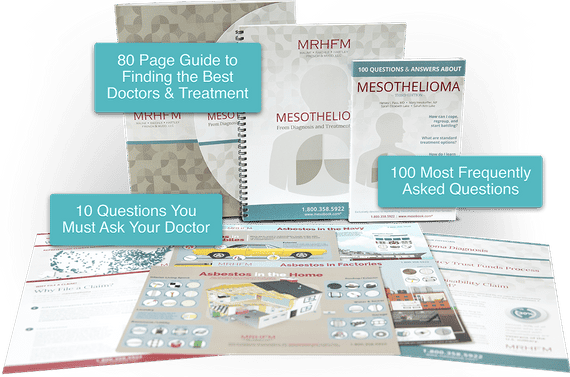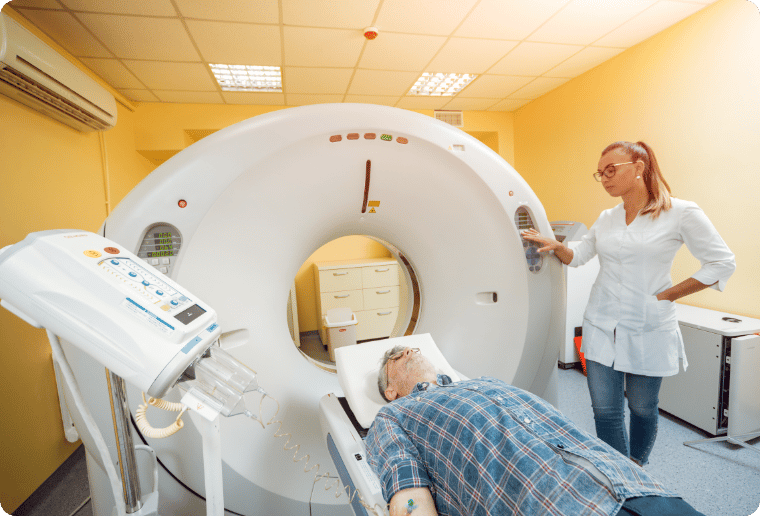
If you or someone you know has been diagnosed with mesothelioma, you want to know how far along the cancer is and what your best treatment options are. You want informed advice and trusted answers on how you can maintain the best quality of life. And you can find it all right here — for free — in our Mesothelioma Care Kit and Package.
Why Cancer Stage is Important
Knowing your cancer stage is important because it helps doctors determine available treatment options and how effective those options will be.
Early-stage mesothelioma is typically eligible for traditional treatments like surgery, chemotherapy, radiation therapy—all of which can extend your life expectancy. Advanced-stage mesothelioma means traditional treatments may not be an option, but clinical trials may be, including newer treatments like immunotherapy.
As a patient diagnosed with mesothelioma, the goal is always to find the most effective treatment options. Knowing factors like the cancer stage, cell type, and location of the mesothelioma are all crucial to you having the best possible outcome.
Cancer staging is an important part of a diagnosis because it determines treatment options. Although there isn’t a specific staging system for mesothelioma, doctors have used a number of systems — TNM, Butchart, and Brigham — to divide the spread of cancer into 4 stages. As a guide, the earlier the stage, the less mesothelioma has grown or spread. The spread of cancer is called metastasis. The less it has spread, the easier it is for surgeons to remove which greatly improves the prognosis.
The growth of stage 1 pleural mesothelioma is limited to the lining of one lung. During stage 1 the tumor can also spread from the outer lining of the lung (closer to the wall of your chest) to the inner lining (closer to the lung itself).
Because stage 1 tumors are more responsive to curative treatment such as surgery, chemotherapy, or radiation therapy, patients have the most favorable prognosis compared to more advanced stages of the disease.
In stage 2, most of the growth still occurs in the lining of one lung but the cancer cells may have spread to the walls of the patient’s chest, diaphragm, nearby lymph nodes, or to the lung itself.
Patients have a similar prognosis to patients with stage 1 and are still eligible for curative treatments which can extend life expectancy.
At stage 3, a tumor has spread throughout one side of the body and has invaded at least one—or all—of the following: one lung, the diaphragm, nearby lymph nodes, and the protective lining of the heart.
The prognosis of patients diagnosed with stage 3 mesothelioma is closely linked to age and general health. Healthy patients who can withstand surgery may be eligible for treatments that can extend life expectancy well past the average.
In stage 4 mesothelioma, the cancer cells and secondary tumors have spread far beyond the lining of one lung and may exist in larger sections of the chest wall, diaphragm, lining of the heart, and lymph nodes located far from the lining of the lung.
The average life expectancy for patients diagnosed with stage 4 mesothelioma is less than 12 months. At this stage, traditional curative treatment options like surgery may not be viable, but patients do have other options. Palliative treatments are designed to ease pain and have shown prognostic benefits in some cases.
Peritoneal and Pericardial Mesothelioma Staging
Because peritoneal and pericardial mesothelioma make up about 20-25% of all cases, doctors don’t typically use stages to describe their spread. But in the last decade, researchers have introduced a 3-stage system for peritoneal mesothelioma.
For pericardial mesothelioma, the rarest of diagnoses, patients are generally described as having localized or advanced mesothelioma. An experienced doctor can still assess how far the mesothelioma has spread and which treatments will work best to improve your prognosis.
As a tumor grows, more symptoms will appear and will occur more often. This spread of symptoms is called metastasis. Doctors divide metastatic symptoms into two general categories: early-stage for stage 1 and stage 2 mesothelioma and advanced-stage for stage 3 and stage 4.
Symptoms of pleural mesothelioma in the early stages of metastasis will feel similar to other illnesses of the lungs, such as pneumonia or asthma. If you’re diagnosed with early-stage mesothelioma, you may feel or experience:
Symptoms caused by advanced-stage mesothelioma occur more often and are more specific than those caused by early-stage mesothelioma. If you have advanced-stage mesothelioma, you may feel or experience:
Some of the tools used to diagnose the stage of mesothelioma include CT, MRI, and PET scans.

A Computed Tomography (CT) scan generates several x-ray images doctors put together to make a single 3D image of the chest or stomach. Doctors use CT scans to determine if a tumor has spread to the chest wall or diaphragm.

Doctors use a Magnetic Resonance Imaging (MRI) scan to find out if mesothelioma has spread from the lining of the lungs, the pleura, to the chest wall, lining of the heart, or nearby organs.

Positron Emission Tomography (PET) Scan: A PET scan is the best method to determine if mesothelioma has spread to other parts of the body. Doctors can even use it to find out if a tumor has spread to lymph nodes that are far from where the mesothelioma first appeared.

Mesothelioma Cancer Community, Sponsored by Maune Raichle Hartley French & Mudd, LLC.
Disclaimer: The information provided by MesotheliomaCancer.org is not a substitute for professional medical advice.
